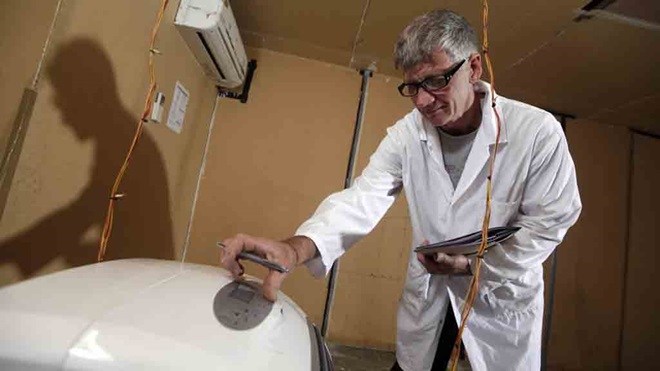Choosing a portable air conditioner can be tricky if you don't know which one to pick or what capacity to go for, especially as, unlike split-system air conditioners, portable models don't have star ratings – only energy use in different climate zones.
That's why we review portable air conditioners to help you choose the best one for your needs. Here's how we go about it.
On this page:
- Our expert testers
- How we choose what we test
- How we score portable air conditioners
- Test criteria explained
- Our test lab
Our expert testers
We've been reviewing air conditioners of various sorts for decades now. CHOICE participates in relevant Australian Standards committees and regulatory forums so we can keep an eye on trends in the industry and air conditioner regulations.
Portable air conditioners are subject to Minimum Energy Performance Standards (MEPS). Now that they're regulated this way, much like split-system air conditioners, we've decided to use these results for our review. We sift through the MEPS data to discover the best models for cooling efficiency and energy efficiency.
How we choose what we test
MEPS data has hundreds of models, but not all of them are on the market – this can be due to a number of reasons such as manufacturers or distributors introducing families of models, but only deciding to release certain models for a variety of reasons. It could also be that supply chain issues have stopped certain models from getting released.
To decide what we publish, we survey manufacturers to find out about their range of models, check market sales information and also check for any member requests to test specific models. From this information we sift through the MEPS data to find the products that are able to be purchased at the time of research.
How we score portable air conditioners
Cooling performance
Our cooling score is based on a comparative analysis of the rated annualised energy efficiency ratio (AEER).
Energy efficiency
We look at the amount of power used and the amount of cooling energy produced as a measure of how well the product uses energy to produce cooling.
Running costs
We look at the power input in kW and use it on a basis of four hours on over the three months of summer to give an indication of how much these products are likely to cost you to run.
Test criteria explained
The overall score is made up of:
- cooling performance (50%)
- energy efficiency (50%).
We display the fan noise as well, as these products tend to be noisy. With the fan on high, all air conditioners are loud enough to interfere with normal conversation, but naturally they're quieter on a low fan speed.
We also calculate the running costs. This is the approximate cost of operating the unit at maximum capacity for four hours per day for three months in hot weather, based on 30c/kWh. These are comparative only as your actual use may be different.
Our test lab
While CHOICE does have high quality thermal laboratories, we don't have a lab suited to air conditioner testing – it would be very expensive to construct and maintain. So instead, when we review portable air conditioners, we use the regulated MEPS data.
Related content
- Portable air conditioners to avoid buying
- The quietest portable air conditioners we tested
- How to install a portable air conditioner
- Portable evaporative coolers vs portable heat pump air conditioners
Stock images: Getty, unless otherwise stated.



